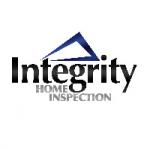“…there is no mention of inspecting any appliances, however I keep seeing you guys refer to them. I'm guessing if it's a built in appliance, i.e. dishwasher/cooktop stove it needs to be inspected. Where can I get info on what to look for on those, or do you just inspect for obvious problems and ensure operation, when required?”
Your Oklahoma SOPs tell you what you need to know. Read them, understand them, and live them. Really, I mean it. The OK SOPs have a list of definitions and it defines Inspect. "Inspect" means to examine readily accessible systems and components of a building in accordance with these Standards of Practice, using normal operating controls and opening readily openable access panels.” "Readily accessible" means available for visual inspection without requiring moving of personal property, dismantling, destructive measures, or any action which will likely involve risk to persons or property.”
The OK SOPs state you must inspect a specific list of kitchen appliances. Visually examine accessible components using normal operating controls and opening readily access panels. Based on the OK SOP definitions, there are no READILY ACCESSIBLE panels to be opened on the kitchen appliances.
So you will saunter into the kitchen and inspect the prescribed appliances. You can optionally choose to ALSO inspect additional appliances like the laundry equipment if you choose to exceed the minimums of the state SOP. I have included the OK SOPs below regarding Appliance Inspections.
Appliance inspection requirements.
(1) The inspector shall inspect the:
(A) Food waste disposal;
(

range/stove, regardless of whether it is an installed or free standing appliance;
(C) cook top;
(D) oven(s);
(E) dishwasher;
(F) ventilation equipment or range hoods;
(G) installed microwave;
(H) trash compactor; and,
(I) gas appliance connectors and shut off valves.
(2) The inspector shall describe the range/stove, cook top and oven(s) by the energy source.
(3) The inspector is not required to:
(A) operate appliances in all modes or self cleaning cycles; or,
(

inspect clocks, timers, thermostats or household appliances not listed in these standards.
Food Waste Disposal: Visually examine accessible components using normal operating controls and opening readily access panels. Check for any obvious physical damage, improper wiring, improper plumbing connections, leaks, rust, physical damage, missing rubber gasket, etc. You will operate using normal controls by turning on water and flipping the wall switch. It will make noise and whirr around a bit. You listen to see if there are any unusual noises like objects that should not be in there, loose blades rattling around, etc. Smell to see if the electric motor is burning. Sniff to see if there is rotten food smell, sulfur, or other non-standard smells. Did the countertop vibrate due to a worn bearing or bent motor shaft, flimsy metal sink, or poor physical connection? Is the unit hardwired or does it use an appliance cord? If hardwired, does the wiring follow accepted electrical wiring practices including support, protection from physical damage, and connection to a junction box? Does the sink have a separate trap, share a trap or two traps. Are they plumbed correctly?
Range/Stove/Oven: Visually examine accessible components using normal operating controls and opening readily access panels. Check for anti-tip device. Operate each burner individually. Electric burners have a common failure pattern of working on high but not low. I turn each burner on low first with my hand on the burner. If it heats up, I remove my hand and turn to high. Turn on oven. If electric you can see the heating element glow orange. If gas you can see the flames. Either way, it the oven generates heat, it is good to go. Turn off. Note the OK SOP Not Required to inspect items. You are not testing self cleaning cycles (takes about 4-5 hours), clocks, timers, and thermostats. If the oven is set to 350 but heats to some other temperature, that is not your problem. All you are checking does it turn on and off.
Dishwasher: Visually examine accessible components using normal operating controls and opening readily access panels. Oklahoma does not require it to be operated. North Carolina SOP requires it be run in the normal cycle. That is the first I do at an inspection since a normal cycle takes 1.5 hours. But first I open the door and tug. Is the dishwasher secured to the cabinetry? Is it visually level and plumb? Is there any physical damage? Is the plastic coating cracked or missing on the racks? Coating lasts on average 5-7 years. If worn or cracked, going to be an older model. Turn on and close door. Let fill with water and start slinging water around. Open the door to make sure it shuts off when the door is opened. Check to see if the arm is a different position so you know it is spinning around. Listen for knocking, banging or other irregular sounds. Check the floor for any leaks. Check drain hose to make sure it has a high loop. (Google high loop if you don’t know what one is.) I place a Watchdog Water Alarm in front of the dishwasher to alert me to leaking since I am not going to stand there for the next 1.5 hours. It has alerted me to leaking DWs several times preventing any major water damage.
Ventilation Equipment: Visually examine accessible components using normal operating controls and opening readily access panels. Turn on the fan. Listen for irregular sounds. Operate all 3 speeds. Does it vent to the exterior or re-circulate? Show the client that the filter is filthy and tell them to get a new one and clean it regularly. If gas cooktop underneath, turn the gas cooktop on high. Let heat for a minute or two. Turn the gas cook top to low and turn the fan on to high. Do the burners blow out? Tell them to have the cook top burners serviced if they blow out. If vented to the exterior, does is use a smooth wall 26 gauge metal duct to the exterior with a working hood and flapper? Duct tape is flammable and not an acceptable repair. Flexible ducts are not valid. Venting to the attic or crawlspace is not valid.
INSTALLED Microwave: Visually examine accessible components using normal operating controls and opening readily access panels. Notice the SOP says INSTALLED. Microwave ovens sitting on the counter are personal property and not considered part of the real estate transaction. They do not transfer with the house and are excluded from a home inspection. I take a glass from the sink, dishwasher or cabinet and put a bit of water in it. Place in micro and hit the 1 minute button. Does the water get hot? If the house is vacant with no glasses, I moisten a paper towel or toilet paper and cook for a bit. Does it get hot? Great, moving on. Do the lights illuminate? Does the fan ventilate?
Trash compactor: Visually examine accessible components using normal operating controls and opening readily access panels. Open the drawer do ensure it opens and closes, secured to cabinetry, etc. Push the compact button. Look, listen and feel. If there are any anomalies then report.
I don’t operate laundry equipment. Personal property and not part of the real estate transaction. I do inspect the washing machine hoses for obvious damage. I do inspect the dryer duct. There are lots of issues with dryer ducts.
I can’t stress this enough. Read, learn, live your SOP. If you have any questions about what to inspect, refer back to the OK SOP. The ASHI, NACHI, and NAHI SOPs are similar but differ from each other and the OK SOP. You gotta follow the OK SOP first and foremost. If you want to ALSO meet the various association SOPS then that is fine.
The OK and ASHI SOPs deal with solid fuel BURNING appliances. They both have similar definitions.
"Solid fuel burning appliances" means a hearth and fire chamber or similar prepared place in which a fire may be built and which is built in conjunction with a chimney; or a listed assembly of a fire chamber, its chimney and related factory-made parts designed for unit assembly without requiring field construction.”
The North Carolina SOP refers to solid fuel HEATING appliances. “Solid fuel heating device” means any wood, coal, or other similar organic fuel burning device, including but not limited to fireplaces whether masonry or factory built, fireplace inserts and stoves, wood stoves (room heaters), central furnaces, and combinations of these devices.” The NC SOP is more inclusive than OK or ASHI.


